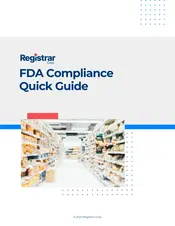
Biological Hazards Compliance Training
Learn about biological hazards of concern, growth factors, sources and pathways of biological hazards, and control factors.

Overview
This course on biological hazards in food production covers essential topics to ensure food safety. Learn key terminology, the impact of biological hazards, and the differences between pathogens and spoilage organisms. The course includes examples of milestone outbreaks, sampling methods, and illnesses caused by biological hazards. It also explores categories of biological hazards and their characteristics, as well as their association with products and processes.
Additionally, the course delves into growth factors, environmental effects, and normal flora competition. It discusses contamination sources, vectors, and food contact surfaces. Control factors, including FATTOM, packaging, control point monitoring, and best management practices, are also covered. Participants will gain a comprehensive understanding of how to prevent and control biological hazards in food production.
The course has been designed specifically for FDA regulators, and now you can gain the same valuable insights and knowledge they receive. You may begin the course anytime and work at your own pace. Once you complete the course, you may download your training certificate which includes Registrar Corp, FDA, and IFPTI logos.
Curriculum
Foundations
- Define relevant terminology.
- Describe the impact of biological hazards on food production.
- Distinguish between pathogens and spoilage organisms.
- Give an example of how a milestone outbreak impacted public policy.
- Discuss how sampling is used to detect organisms of concern.
- Give examples of illnesses caused by biological hazards.
- Identify categories of biological hazards.
- Give examples of each category of biological hazard.
- Compare characteristics of bacteria, viruses, parasites, fungi, and other biological agents.
- Associate biological hazards with products and processes.
Growth Factors
- Differentiate between the growth factors of biological organisms.
- Describe the effects of environmental conditions on growth.
- Discuss how normal flora competition can inhibit pathogen growth.
- Sources and Pathways
- Discuss how biological hazards contaminate products and processes.
- Describe vectors of contamination.
- Give examples of food contamination sources.
- Differentiate between direct and indirect food contact surfaces
- Differentiate between intentional and unintentional contamination.
Control Factors
- Differentiate between control factors for biological hazards.
- Explain the concept of FATTOM to prevent the growth of biological hazards.
- Describe how product packaging can limit or prevent the growth of biological hazards.
- Describe control point monitoring.
- Explain why source is important as a control factor.
- Describe best management practices that are used to prevent the spread of biological hazards.
- Explain the concept of “hurdle factors”.
- Give examples of organism-specific control factors.
Free FDA Compliance Guide

















